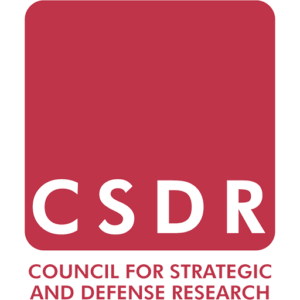In his inaugural address at the 3rd National Mining Ministers’ Conference (January 20), Union Mines Minister GK Reddy stated that the GoI will soon launch the National Critical Minerals Mission (CMM), first announced in the Budget 24-25. Moreover, at the conference, Reddy and Odisha CM Majhi jointly launched the Mining Tenement System (MTS) and handed over sanction letters to 11 startups selected for grants under the S&T-PRISM Component of the Science and Technology Programme run by the Ministry of Mines.
Strategic Significance and Current Challenges
For some time now, prominent analysts and policymakers, including Indian Mines Secretary VL Kantha Rao, have advocated for a “unified approach” to streamline the various ad-hoc policies undertaken by the GoI to secure and integrate into critical mineral supply chains. As Rao explained to the PTI last month, “Basically, we have to bring the Mission [CMM] forward so that there is a whole [of] government approach… wherein the industry and all the stakeholders, R&D, foreign acquisitions everything works together.”
The recognition of the need for an end-to-end approach to critical minerals has closely paralleled a steady rise in global risk assessments, as geopolitical competition increasingly affects supply chains.
In particular, Beijing has demonstrated an appetite to ‘weaponise’ critical mineral supply chains as a retaliatory measure against Washington’s tech-based export controls with stark implications for the rest of the world. This assumes much significance, given China’s near-monopoly over large segments of the global value chain, especially in production and refinement. Just last week, Chinese state media announced the discovery of massive lithium reserves and salt lakes, which imply a dramatic increase in China’s global share of lithium (from 6% to 16.5%) and make it the second-largest holder (after Chile) of lithium reserves in the world.
For India, which has major import dependencies on China (82% for lithium, for instance), “the growing weaponisation of economic capabilities, including market shares, has become a major source of anxiety,” as EAM Jaishankar put it (more broadly) last week. This heavy reliance on imports stems from several structural challenges within India’s mineral ecosystem, which require high-risk investments in exploration and mining technologies. Consequently, inadequate incentives and policy support have deterred private-sector participation.
For instance, out of 49 critical mineral blocks put up for auctions in four tranches last year, 24 were successfully auctioned, and the rest were annulled—reportedly because they did not attract the minimum number of technical bids required. In part, this limited success is a function of capacity crunch. Take India’s recently (last year) discovered lithium reserves in J&K as an example, where, despite the presence of 5.9 million tonnes of resources in clay deposits, the lack of adequate extraction technologies makes it commercially unviable to mine such geological formations.
In this context, start-ups under the S&T-PRISM aim to focus on the development of indigenous technologies in areas such as high-grade silica production, lithium battery materials and AI-enhanced mine operations. However, penetrating the higher ends of the global value chain will require investments and research in far more capital-intensive technologies, such as vapor metallurgy, which the Ministry of Mines has previously identified as ‘the future of metallurgy’.
Similarly, the lack of transparency over the nature of blocks put for auctions has also been a key deterrent for interested private players, who have repeatedly expressed concerns to the Indian media about the absence of detailed resource data for blocks and explained how it is an obvious pre-requisite for major financial decisions and in line with global best practices. Therefore, the launch of MTS is a welcome step as it will enhance transparency and boost efficiency in the allocation and management of mineral resources.
Future Policy Outlook and Industry Expectations
Although details of the CMM are yet to be released, broad objectives are discernable from the policy lessons of last year and statements made by GoI officials. As the Mines Secretary stated, “2025 will also be important for us to handhold the critical mineral successful bidders because they have just won.” Reportedly, the GoI plans to offer incentives at every stage of the production process—from exploration to mining, and metal extraction/refinement facilities—in order to significantly boost private sector participation. The policy support will also be applicable retrospectively.
The Fraser Institute’s Annual Survey of Mining and Exploration Companies 2023 ranked India in the bottom ten (of 60 countries ranked last year) on the Policy Perception Index. Among many other structural impediments, India’s high effective tax rates on mining are estimated to be about 46-50% (after reduction from 60-64%) and among the highest globally. Consequently, the Budget for FY 25-26 may further reduce tax rates in a bid to attract domestic as well as foreign direct investments.
Meanwhile, the results of first-ever auctions for offshore critical mineral blocks can be expected in the next few months, which will provide crucial prima-facie indications of the nature of India’s offshore resources. The fifth tranche for auctions of 15 critical blocks has also been launched. Parallelly, the Geological Survey of India has increased the number of critical mineral exploration projects for FY25-26 by 15% (195 such explorations were carried out in FY24-25, already up from 127 carried out in FY23-24), and a higher priority on critical minerals has been placed for ear-marked projects.
More broadly, the year 2025, with the advent of CMM, will likely see major developments in India’s policy framework for critical minerals as the race for energy and mineral security accelerates across the world.
